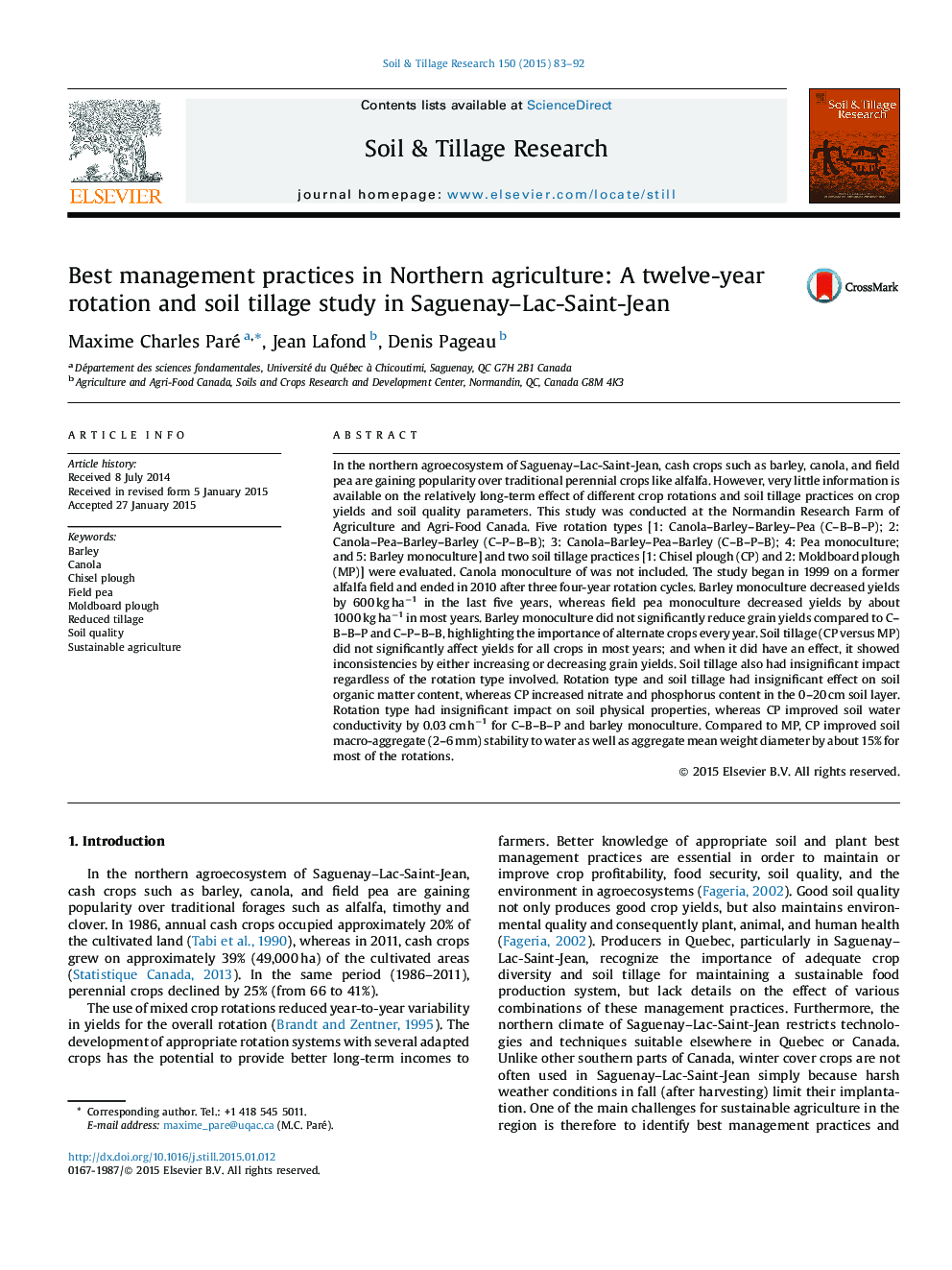| کد مقاله | کد نشریه | سال انتشار | مقاله انگلیسی | نسخه تمام متن |
|---|---|---|---|---|
| 305569 | 513035 | 2015 | 10 صفحه PDF | دانلود رایگان |

• Long-term effects (12 years) of crop rotations and soil tillage were evaluated.
• Compared to monoculture, rotation generally increased crop yields.
• Rotation type alone had minimal impacts on soil quality parameters.
• Tillage (moldboard plough vs chisel plough) did not significantly affect crop yields most years.
• Chisel plough improved some of soil quality parameters related to stable aggregates.
In the northern agroecosystem of Saguenay–Lac-Saint-Jean, cash crops such as barley, canola, and field pea are gaining popularity over traditional perennial crops like alfalfa. However, very little information is available on the relatively long-term effect of different crop rotations and soil tillage practices on crop yields and soil quality parameters. This study was conducted at the Normandin Research Farm of Agriculture and Agri-Food Canada. Five rotation types [1: Canola–Barley–Barley–Pea (C–B–B–P); 2: Canola–Pea–Barley–Barley (C–P–B–B); 3: Canola–Barley–Pea–Barley (C–B–P–B); 4: Pea monoculture; and 5: Barley monoculture] and two soil tillage practices [1: Chisel plough (CP) and 2: Moldboard plough (MP)] were evaluated. Canola monoculture of was not included. The study began in 1999 on a former alfalfa field and ended in 2010 after three four-year rotation cycles. Barley monoculture decreased yields by 600 kg ha−1 in the last five years, whereas field pea monoculture decreased yields by about 1000 kg ha−1 in most years. Barley monoculture did not significantly reduce grain yields compared to C–B–B–P and C–P–B–B, highlighting the importance of alternate crops every year. Soil tillage (CP versus MP) did not significantly affect yields for all crops in most years; and when it did have an effect, it showed inconsistencies by either increasing or decreasing grain yields. Soil tillage also had insignificant impact regardless of the rotation type involved. Rotation type and soil tillage had insignificant effect on soil organic matter content, whereas CP increased nitrate and phosphorus content in the 0–20 cm soil layer. Rotation type had insignificant impact on soil physical properties, whereas CP improved soil water conductivity by 0.03 cm h−1 for C–B–B–P and barley monoculture. Compared to MP, CP improved soil macro-aggregate (2–6 mm) stability to water as well as aggregate mean weight diameter by about 15% for most of the rotations.
Journal: Soil and Tillage Research - Volume 150, July 2015, Pages 83–92